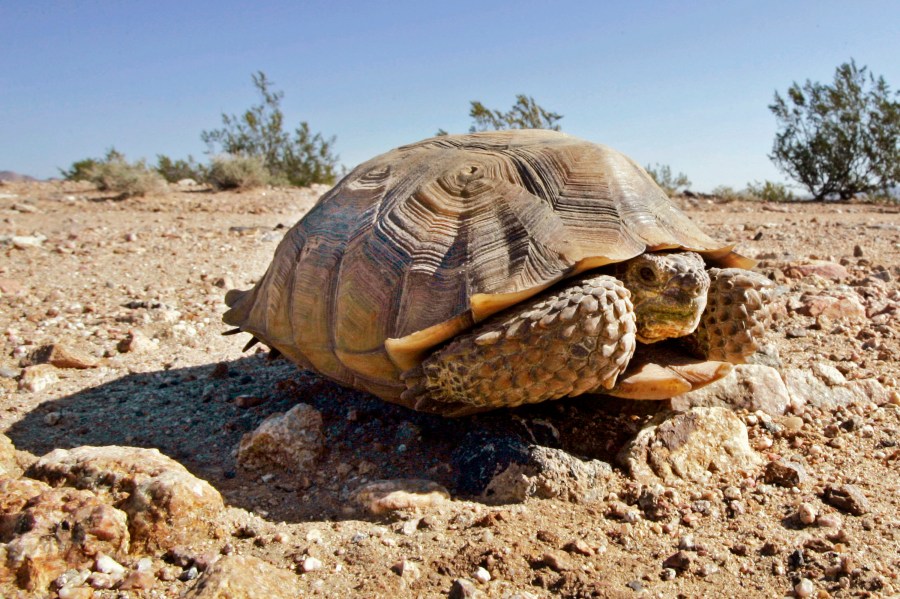An iconic Southern California desert dweller is now formally recognized by the State of California as endangered.
On Thursday, the California Fish and Game Commission unanimously approved designating the Mojave desert tortoise as endangered, elevating its risk for extinction from its previous designation as threatened.
The Mojave desert tortoise has been recognized as a threatened species under the California Endangered Species Act for 35 years, and recognized at the federal level for 34.
But despite more than three decades of state and federal protection, tortoise populations have not shown consistent signs of recovery and advocates warn that the species is closer to extinction than ever before.
Designated conservation areas have been set up to monitor the numbers of wild tortoises and all of those designated areas saw drastic declines, with the worst loss in the Western Mojave, which experienced 54% decline over 19 years.

Wildlife researchers say the minimum density for desert tortoises to remain viable is 3.9 adults per square kilometer. In the ten designated tortoise conservation areas, only two meet that threshold today.
Advocates and wildlife experts say desert tortoise are at a disadvantage for recovery for multiple reasons, including their low reproductive rates, slow growth rate and long lifespans.
“We have to recognize that desert tortoises are not an annual species that can rapidly recover from population declines,” said Michael Tuma, an adjunct professor at the University of Southern California and a member of the Desert Tortoise Council board, one of three organizations that petitioned the change in designation.
The Mojave desert tortoise faces multiple threats to its survival, including habitat loss driven by development, military training and base expansion, off-highway vehicle use and livestock grazing. Other challenges include disease, invasive species, and wildfires and extended droughts associated with climate change.
“Tortoise populations will need decades to recover from population declines, and that’s only if we can provide an environment with sustained relief from threats. Listing the species as endangered under CESA will give them the best chance at successful recovery,” Tuma said.
The effort to “uplist” desert tortoises has been in the works for more than four years and the California Department of Fish and Wildlife has spent the last 12 months evaluating the request.
Jeff Aardahl of the Defenders of Wildlife, another of the groups involved in the efforts to uplist the tortoises, called Thursday’s actions by the Fish and Game Commission warranted.
“[It] reflects the dire status of our state reptile and its urgent need for additional protections,” Ardahl said. “The Mojave desert tortoise serves as an indicator of the health of our desert ecosystem, and both the species and its habitats are facing a myriad of serious threats.”

The Mojave population of desert tortoise includes all tortoises north and west of the Colorado River in Arizona, Utah, Nevada and California, according to the U.S. Fish and Wildlife Service.
They famously roam Joshua Tree National Park in the Inland Empire and are among the most-researched animals in the park, according to the National Park Service.
They eat primarily herbs, wildflowers and cacti and they hibernate for up to nine months each year. They can get to be as old as 80, but it can take as long as 20 years for them to reach sexual maturity and their eggs and hatchlings are often prey for other animals.
Roger Dale, president of the Desert Tortoise Preserve Committee, says it is the hope of tortoise researchers and advocates that protecting additional land from development and other use will reduce threats and help the reptile bounce back.
“We are hopeful that the uplisting will attract additional resources for proven conservation measures such as land acquisition, fencing, habitat restoration and permanent stewardship of preserve areas,” Dale said.
For more information about the Mojave desert tortoise, click here.




















